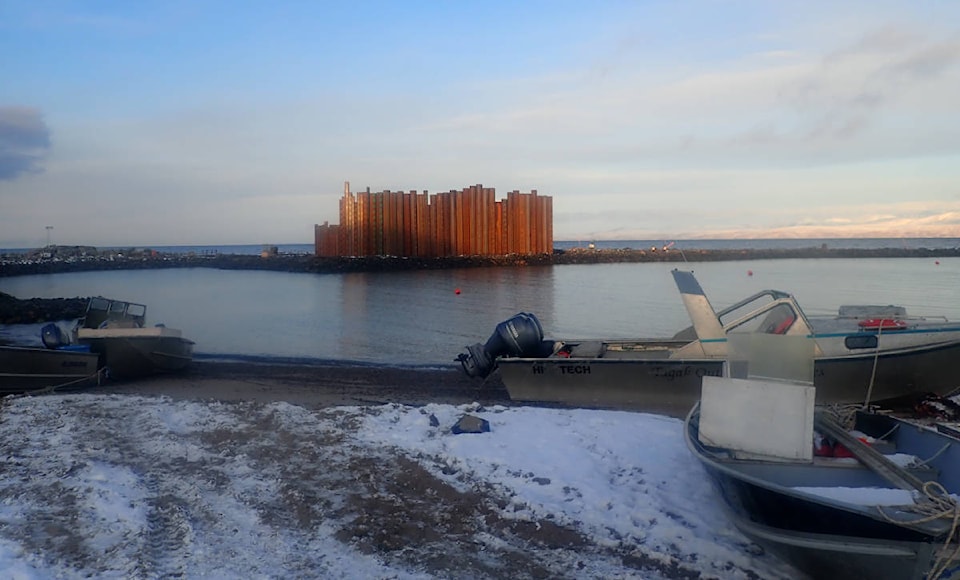The federal government has four more harbours planned to serve Nunavut communities over the coming years, but the Government of Nunavut’s roadmap for territorial marine infrastructure has been sidetracked by COVID-19.
The Department of Fisheries and Oceans is committing to build harbours in Arctic Bay and Clyde River while Transport Canada will do likewise in Resolute Bay and Grise Fiord.
Design and geotechnical work is underway for the Arctic Bay and Clyde River harbours and environmental permitting is proceeding, according to Holly Foerter, regional director of communications for Fisheries and Oceans. The final cost and the timing of construction have yet to be determined, she added.
The harbours in Arctic Bay and Clyde River will be constructed based on the same model used in Pangnirtung in 2013, which she referred to as “an essential part of the community.”
The Qikiqtani Inuit Association, the Government of Nunavut and the respective communities themselves have had input on the four proposed new harbours, Foerter stated.
As part of the signing of the Tallurutiup Imanga and Tuvaijuittuq conservation agreement during summer 2019, the federal government announced close to $190 million in long-term infrastructure funding for north Baffin.
Meanwhile, the Department of Economic Development and Transportation (EDT)’s plans to compile a master list of marine infrastructure needs for Nunavut has been held up by the pandemic. Six community visits were completed in early 2020 – to Arviat, Rankin Inlet, Chesterfield Inlet, Baker Lake, Cambridge Bay and Kugaaruk – but assessments in 12 other communities have been on hold due to COVID-19 travel restrictions.
EDT is working with engineering consultants to identify communities that can be consulted remotely, as soon as possible, the GN stated. When travel is allowed to resume – perhaps by summer or early fall, the GN speculated – then in-person visits will take place in the remaining communities: Whale Cove, Naujaat, Coral Harbour, Kugluktuk, Gjoa Haven, Taloyoak, Sanikiluaq, Sanirajak, Iglulik, Kinngait, Kimmirut and Qikiqtarjuaq.
Community consultations and meetings with residents are intended to be part of the projects, according to EDT.
“We were very fortunate to complete a portion of the communities before the pandemic, but generally speaking the travel restrictions have been a serious obstacle to the successful completion of this project. Once the community visits are completed, a final report will be prepared; at present it appears likely that this will be delivered in late fall or early 2022,” EDT stated.
In March 2019, when EDT Minister David Akeeagok revealed plans to undertake a study of Nunavut’s marine infrastructure needs, Aggu MLA Paul Quassa expressed disbelief that the GN hadn’t already prioritized such projects.
“I think we all know, for those of us who live in the communities, that there doesn’t really need to be a detailed study done,” Quassa said at the time. “We know what the community needs and what has to be done with regard to marine infrastructure.”
Akeeagok replied that some communities’ marine infrastructure plans are outdated and changing coastlines due to soil erosion must also be considered.
